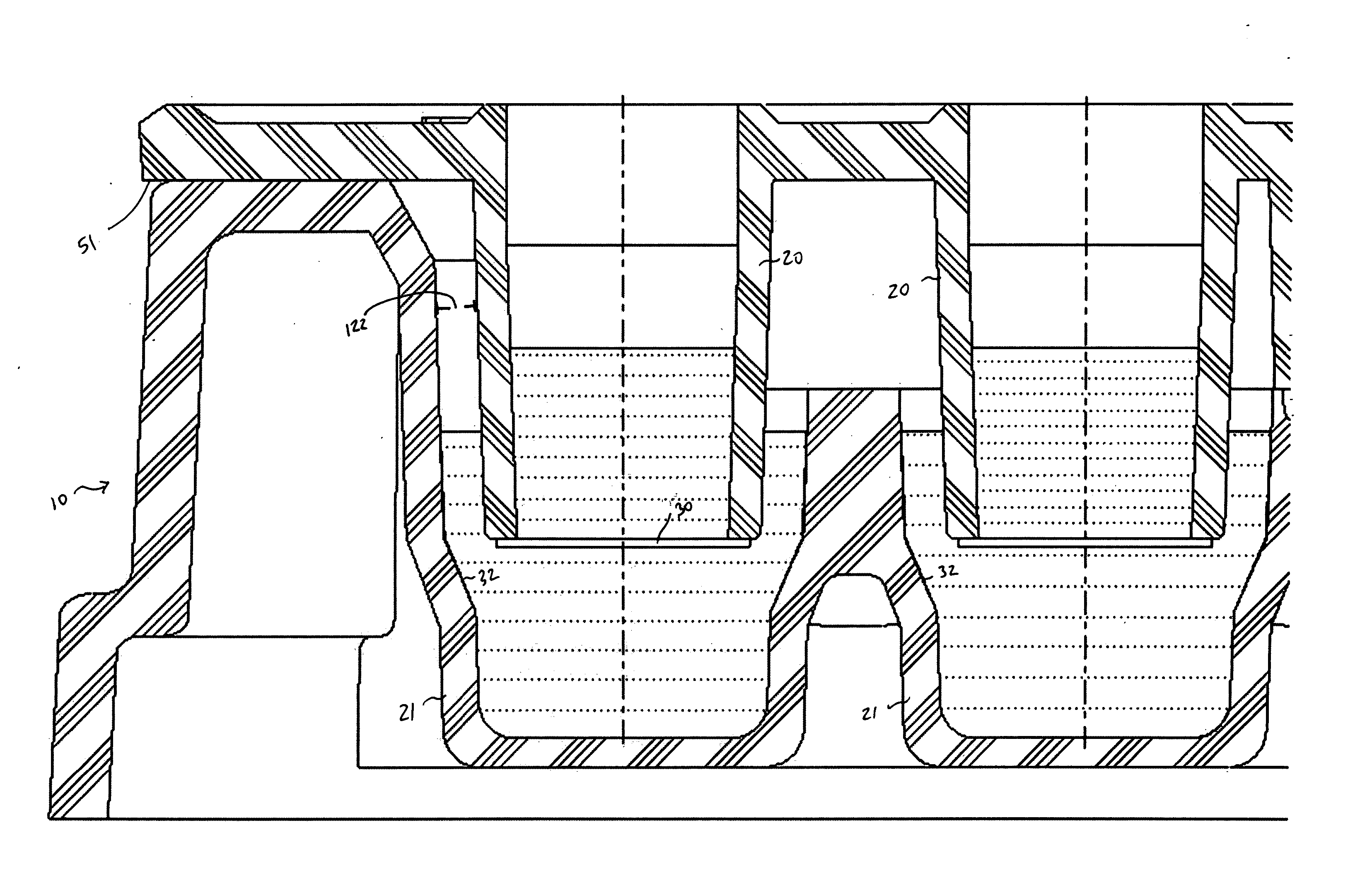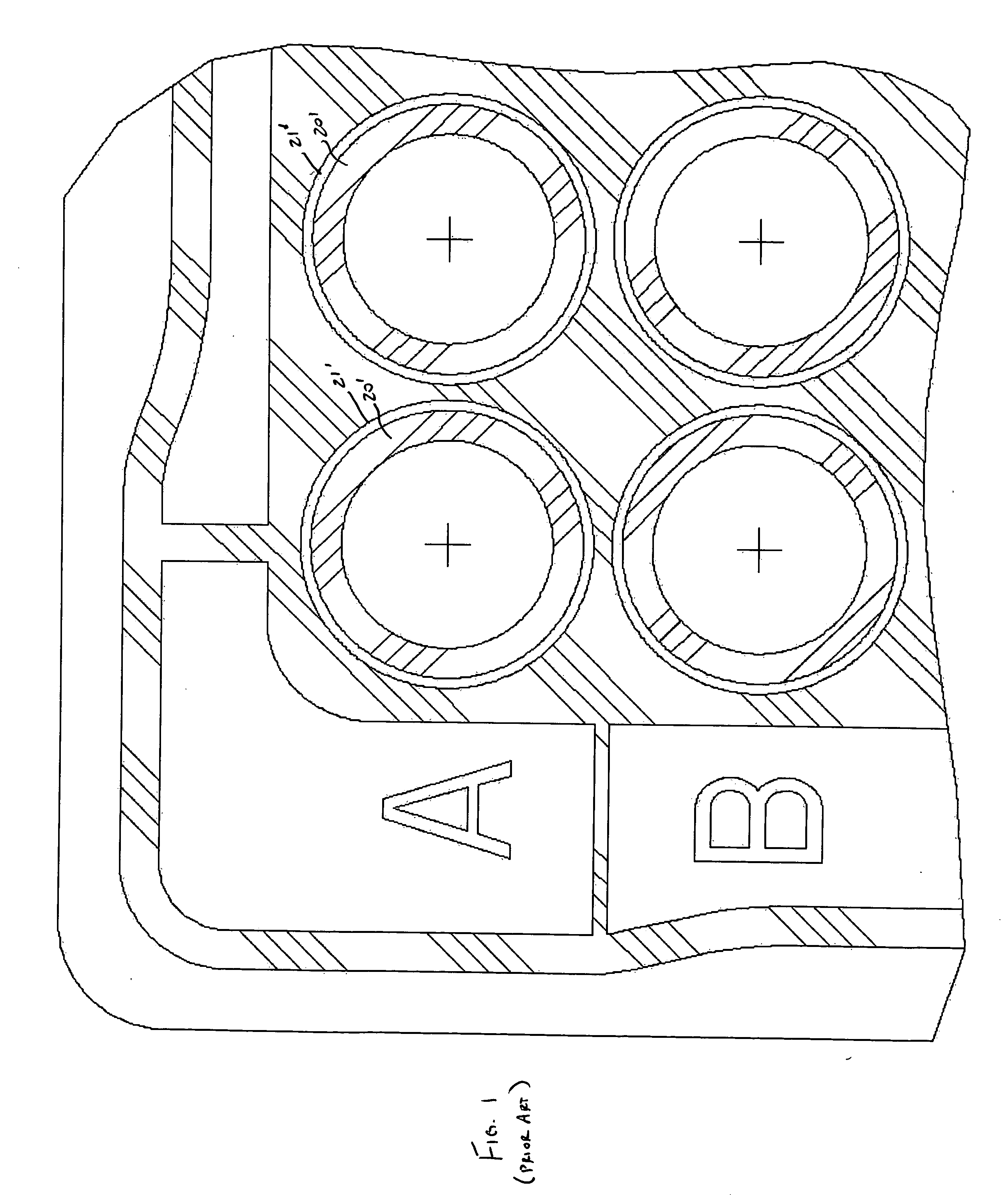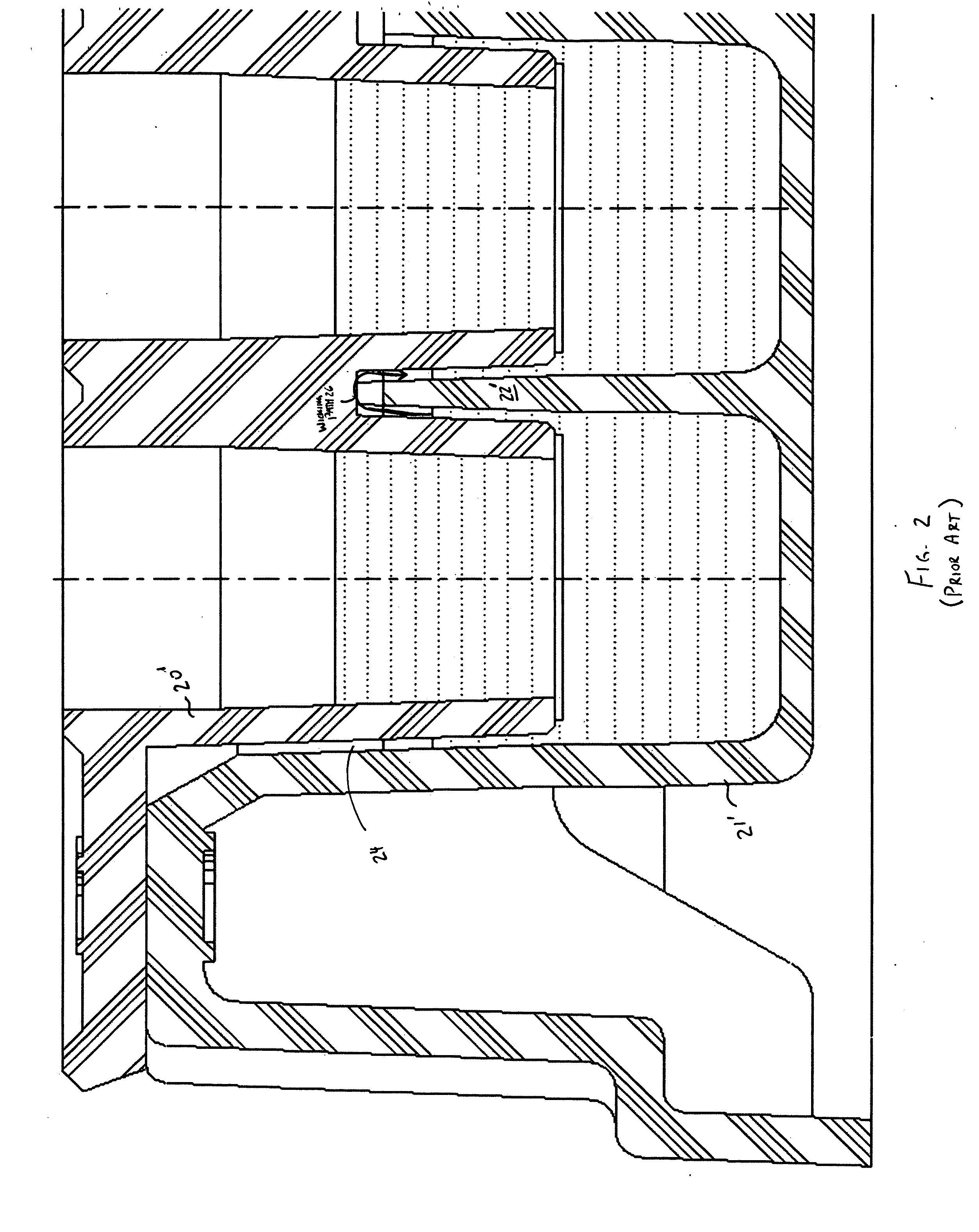Receiver plate with multiple cross-sections
a technology of receiving plate and cross-section, which is applied in the direction of analytical using chemical indicators, laboratory glassware, instruments, etc., can solve the problems of non-uniform gap and form non-uniform cross-section along the well height, and achieve the effect of reducing wicking and cross-contamination, increasing the volume around the filter, and increasing the gap siz
- Summary
- Abstract
- Description
- Claims
- Application Information
AI Technical Summary
Benefits of technology
Problems solved by technology
Method used
Image
Examples
Embodiment Construction
[0022] Turning first to FIGS. 1 and 2, there is shown conventional filter plate wells 20′ nested in conventional receiver plate wells 21′. The filter plate wells 20′ have a uniform circular cross-section, and the receiver plate wells 21′ have a uniform circular cross-section as well. The outside diameter of the filter plate wells 20′ is slightly smaller than the inside diameter of the receiver plate wells 21′, enabling the filter plate wells 20′ to be nested within the receiver plate wells as seen in FIG. 2. A small capillary gap 24 is formed between the outer walls of the filter plate wells 20′ and the inner walls of the corresponding receiver plate wells 21′, as well as between the inner walls of the filter plate wells 20′ and the wall 22′ separating receiver plate wells 21′. This gap allows for displacement and wicking of fluid and results in cross-contamination, as fluid from one receiver plate well can travel in the gap and contaminate fluid in another well, as shown by the wic...
PUM
| Property | Measurement | Unit |
|---|---|---|
| angles | aaaaa | aaaaa |
| angle | aaaaa | aaaaa |
| diameter | aaaaa | aaaaa |
Abstract
Description
Claims
Application Information
 Login to View More
Login to View More - R&D
- Intellectual Property
- Life Sciences
- Materials
- Tech Scout
- Unparalleled Data Quality
- Higher Quality Content
- 60% Fewer Hallucinations
Browse by: Latest US Patents, China's latest patents, Technical Efficacy Thesaurus, Application Domain, Technology Topic, Popular Technical Reports.
© 2025 PatSnap. All rights reserved.Legal|Privacy policy|Modern Slavery Act Transparency Statement|Sitemap|About US| Contact US: help@patsnap.com



